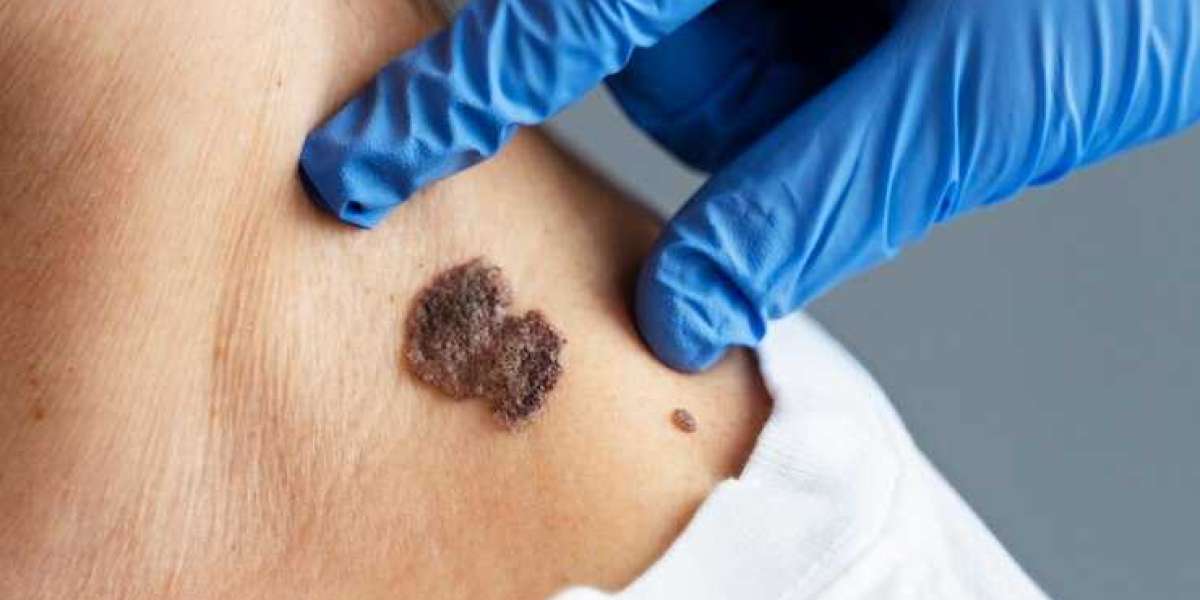Birthmarks are common skin features that can vary in size, shape, and color. While many people are born with birthmarks or develop them during childhood, some individuals may feel self-conscious about their appearance due to the prominence of these marks. Fortunately, with advanced medical treatments available in Dubai, birthmark removal has become a safe and effective solution for those seeking to improve their appearance. If you’re considering birthmark removal in Dubai, here’s what you need to know about the procedures, costs, risks, and results.
1. Understanding Birthmark Removal
birthmark removal in Dubai refers to a variety of cosmetic procedures aimed at reducing or eliminating birthmarks on the skin. There are different types of birthmarks, including:
- Pigmented birthmarks: These are dark in color, such as moles or café-au-lait spots.
- Vascular birthmarks: These are usually red or purple and include conditions like port-wine stains, hemangiomas, and angiomas.
Depending on the type, size, and location of the birthmark, a healthcare professional will recommend the most suitable treatment option.
2. Birthmark Removal Methods in Dubai
Dubai is known for its cutting-edge medical technologies, and birthmark removal is no exception. Clinics in the city offer a range of advanced methods to remove birthmarks safely and effectively. The most common treatment options include:
2.1 Laser Treatment
Laser therapy is the most widely used method for birthmark removal in Dubai, especially for pigmented birthmarks. It involves the use of concentrated light energy that targets the pigment in the birthmark, breaking it down and allowing the body to gradually absorb it. Laser treatments are generally non-invasive, require little downtime, and are suitable for various birthmark types.
- Pulsed Dye Laser (PDL): Ideal for vascular birthmarks like port-wine stains and hemangiomas.
- Q-Switched Laser: Works well for pigmented birthmarks, especially moles and dark spots.
Laser treatment is usually performed in multiple sessions, depending on the size and depth of the birthmark. The number of sessions varies but is typically between two and five.
2.2 Surgical Excision
For larger or more deeply embedded birthmarks, surgical excision might be the best option. This method involves cutting out the birthmark and stitching the skin back together. While surgical excision is effective, it may leave a scar, and the recovery period is typically longer than with laser treatments.
2.3 Cryotherapy
Cryotherapy, or freezing therapy, involves applying liquid nitrogen to the birthmark to freeze and destroy the abnormal tissue. This method works best for small pigmented birthmarks, such as moles, and is relatively quick. However, cryotherapy may not be suitable for larger birthmarks or those with deeper pigmentation.
2.4 Topical Treatments
Some birthmarks can be lightened or faded with topical treatments or creams. While these products are generally more affordable and less invasive, they may not be as effective for all birthmark types. Topical treatments usually work best for superficial or lighter pigmented birthmarks.
3. Consultation and Evaluation
Before proceeding with birthmark removal, it’s important to have a consultation with a qualified dermatologist or plastic surgeon in Dubai. During this consultation, the doctor will assess the birthmark, discuss your medical history, and recommend the most appropriate treatment. They will also explain the potential risks and benefits of the procedure.
What to Expect in a Consultation
- Medical History: The doctor will ask about your overall health and any previous skin conditions or treatments.
- Birthmark Assessment: The doctor will evaluate the type, size, and location of the birthmark.
- Treatment Recommendations: Based on the assessment, the doctor will suggest the best treatment option and discuss the expected results.
- Cost Estimate: You’ll receive an estimate of the treatment cost, including any follow-up appointments.
A thorough consultation ensures that you choose the right treatment plan for your needs and helps set realistic expectations for the procedure.
4. Risks and Side Effects
While birthmark removal treatments are generally safe, there are potential risks and side effects associated with the procedures. It’s important to discuss these with your doctor beforehand and follow all post-treatment care instructions.
Laser Treatment Risks:
- Skin irritation: Redness, swelling, or mild discomfort may occur after laser treatment.
- Hyperpigmentation: In some cases, the skin may darken in the treated area, especially for individuals with darker skin tones.
- Hypopigmentation: The treated area may become lighter than the surrounding skin, which can be permanent.
Surgical Excision Risks:
- Scarring: Surgical excision may leave a scar, which can vary in size and visibility depending on the procedure and the individual’s healing process.
- Infection: As with any surgical procedure, there is a risk of infection, which can be minimized with proper aftercare.
Cryotherapy Risks:
- Scarring: Like surgery, cryotherapy may also leave a scar, though it is generally less noticeable than with excision.
- Blistering: The treated area may develop blisters that need proper care to avoid infection.
5. Cost of Birthmark Removal in Dubai
The cost of birthmark removal in Dubai varies depending on factors such as the type of treatment, the size of the birthmark, the clinic’s reputation, and the expertise of the doctor. On average, the cost for laser treatments can range from AED 1,000 to AED 5,000 per session. Surgical excision and cryotherapy tend to be more expensive, with prices starting around AED 2,500 and going up based on the complexity of the procedure.
It’s important to note that some clinics offer payment plans or financing options, so be sure to ask about these during your consultation.
6. Choosing the Right Clinic for Birthmark Removal
When selecting a clinic for birthmark removal in Dubai, ensure that it is reputable and staffed by qualified professionals. Here are some factors to consider when choosing the right clinic:
- Qualifications and experience: Look for a clinic with board-certified dermatologists or plastic surgeons who specialize in cosmetic skin procedures.
- Patient reviews: Research reviews and testimonials from previous patients to get an idea of the clinic’s reputation and the quality of care.
- Before-and-after photos: Reputable clinics often showcase the results of previous patients to give you a clear idea of what to expect.
- Technology and equipment: Make sure the clinic uses advanced, FDA-approved technology for birthmark removal, ensuring optimal safety and effectiveness.
7. Recovery and Aftercare
After birthmark removal, you’ll need to follow specific aftercare instructions to ensure proper healing and minimize the risk of complications. Here are some common post-treatment care guidelines:
- Laser treatment: Apply soothing creams or ointments as recommended by your doctor, and avoid sun exposure for several weeks.
- Surgical excision: Keep the wound clean, avoid strenuous activities, and follow up with your doctor to monitor the healing process.
- Cryotherapy: Keep the treated area clean and dry, and avoid picking at scabs to prevent scarring.
Recovery times vary depending on the treatment method, but most patients can resume their normal activities within a few days to a week.
8. Conclusion
Birthmark removal in Dubai is a popular and effective solution for those looking to enhance their appearance and boost their confidence. With the right treatment, you can enjoy smoother, clearer skin and say goodbye to unwanted birthmarks. Be sure to consult with a qualified professional, choose a reputable clinic, and understand the treatment options available to ensure a safe and successful experience.














